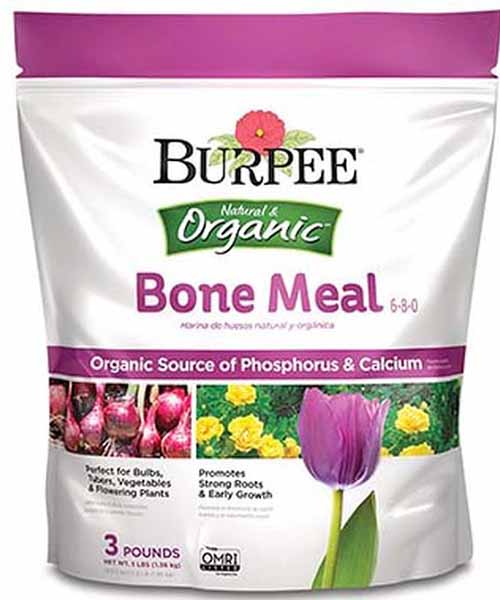If you’re buying the correct product, this generally isn’t something that you need to worry about.
3. Avoid Potential for Contamination
There is some concern that animal byproducts may be contaminated with bovine spongiform encephalopathy, aka BSE, or mad cow disease.
According to a Bovine Spongiform Encephalopathy (BSE) Questions and Answers document provided by the FDA, contaminated feed may have been a contributing factor to the outbreak of the disease in Britain in 1993.


However, the USDA Animal and Plant Health Inspection Service states: “Regulations from the Food and Drug Administration (FDA) have prohibited the inclusion of mammalian protein in feed for cattle and other ruminants since 1997 and have also prohibited high risk tissue materials in all animal feed since 2009.”
There is no mention of concerns over the use of bone meal fertilizer, however, the purchase of American-made products may be the best choice for both feed and fertilizer, in terms of safety.
Where to Buy
OMRI (Organic Materials Review Institute) listed for organic use, Espoma Organic Bone Meal is available via Amazon in 4 lbs bags.


Espoma Organic Bone Meal
Available from a brand that many gardeners trust, it’s made with organic ingredients in a 4-12-0 mix of bone meal to promote strong roots and flowers.
For those with larger gardens, it’s also available in 24 lbs bags.
For another organic, American-made product, try Down to Earth Bone Meal. This product is available from Arbico Organics in 5-pound packages.


Down to Earth Bone Meal
For extra peace of mind, it is labeled “People & Pet Safe When Used As Directed.”
Burpee’s Natural & Organic Bone Meal is another recommended option, OMRI labeled for organic use, with a 6-8-0 mix.


Burpee Natural & Organic Bone Meal
This product is available from Burpee in 3-pound bags.
Application Tips
When applying any sort of fertilizer, moderation is key. Too much fertilizer can injure plants, and much of the excess will be washed away and become a waste.
Our writer Matt Suwak provided the following directions:
Step 1 – Dig
First, dig out the area where you’ll be planting your bulbs.


We used a small sprinkling of bone meal at the bottom of the planting area, added a thin sprinkling of soil, then plopped the bulbs into place.
Step 2 – Cover
Cover the bulbs with loose earth, then apply a light sprinkling of bone meal to the surface.


The package that we were working with recommends 1 tablespoon per square foot, or 1 cup per 20 square feet, and this recommended ratio is relatively standard.
I’ve never been one for this kind of specificity, so instead I lightly sprinkled the fertilizer on top of the soil.
Step 3 – Rake
Rake the fertilizer into the soil to prevent it from being washed away, or gobbled up by critters.


If you’re applying mulch to the planting area, this is when to do it.

